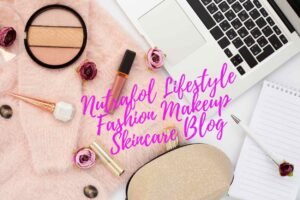If your skin often feels itchy, red, or irritated after using makeup, you’re not alone. Sensitive skin reacts more easily to certain ingredients found in cosmetics, making it harder to find products that work. But that doesn’t mean you have to skip makeup altogether. With the right routine and a few smart choices, you can enjoy wearing makeup without discomfort.
Summary of Contents
ToggleWhat Makes Skin Sensitive to Makeup?

Sensitive skin reacts to certain ingredients more easily than normal skin. Common triggers include:
- Fragrances (even “unscented” products sometimes contain masking fragrances)
- Alcohol-based formulas that dry out your skin
- Heavy coverage products that clog pores
- Harsh preservatives like parabens
- Chemical sunscreens (vs. mineral ones)
Your skin might also be more sensitive if you use retinoids, have conditions like rosacea or eczema, or undergo hormonal changes.
Rules for Sensitive Skin Makeup
- Always patch test first. Test a tiny amount of the new product on your inner wrist or just behind your ear. Then wait 24 to 48 hours to check for any signs of irritation.
- Less is more. Your skin will thank you for lighter coverage rather than heavy, full-coverage products that can suffocate your pores.
- Read ingredient lists. Look for “fragrance-free,” “hypoallergenic,” and “non-comedogenic” on labels. But remember – these terms aren’t regulated, so they’re not guarantees.
Step-by-Step Sensitive Skin Makeup Routine
Step 1: Start with Clean, Moisturized Skin
Use a gentle, fragrance-free cleanser and follow with a lightweight, non-comedogenic moisturiser. Allow your moisturiser to soak in for 5 to 10 minutes before starting your makeup to ensure better application and lasting wear.
Why this matters: Makeup applies better on hydrated skin, and you’ll need less product overall.
Step 2: Choose the Right Primer
Skip primers with silicones if they cause you problems. Instead, look for:
- Mineral-based primers
- Primers with niacinamide (helps reduce redness)
- Hydrating primers with hyaluronic acid
Use a light layer—there’s no need to apply it over your whole face.
Step 3: Foundation That Works
Best foundation types for sensitive skin:
- Mineral foundations (powder or liquid)
- BB creams or tinted moisturisers
- Foundations with zinc oxide or titanium dioxide
Application tip: Use a damp beauty sponge instead of brushes, which can be too harsh. Pat, don’t rub.
Coverage strategy: Build coverage gradually. One thin layer is better than one thick layer.
Step 4: Concealer Carefully
Only use concealer where you need it. Look for creamy, hydrating formulas rather than matte, long-wearing ones that can be drying.
Please apply with your ring finger (it applies the gentlest pressure) or a small, soft brush.
Step 5: Set Lightly
Use a translucent, talc-free setting powder only in your T-zone if needed. Many people with sensitive skin can skip powder entirely, especially when using lightweight base products.
Step 6: Eyes and Lips
For eyes: Cream eyeshadows are often gentler than powders. Avoid waterproof formulas – they’re harder to remove and require harsher makeup removers.
For lips: Choose fragrance-free lip products. If you’re prone to lip sensitivity, stick to simple lip balms with colour rather than long-wearing liquid lipsticks.
Ingredients to Look For
These ingredients are generally well-tolerated by sensitive skin:
- Zinc oxide and titanium dioxide (gentle sun protection)
- Niacinamide (reduces redness and inflammation)
- Hyaluronic acid (hydrates without irritation)
- Ceramides (support your skin barrier)
- Iron oxides (natural colourants in mineral makeup)
Red Flag Ingredients to Avoid

While everyone’s skin is different, these are common irritants:
- Fragrance and essential oils
- Alcohol (especially denatured alcohol)
- Formaldehyde-releasing preservatives
- Certain chemical sunscreens (oxybenzone, octinoxate)
- Harsh dyes and artificial colours
Tips That Work
- Remove makeup gently. Use a fragrance-free cleansing oil or micellar water. Never scrub or use makeup wipes daily – they’re too harsh.
- Don’t try everything at once. Introduce one new product at a time so you can identify what works and what doesn’t.
- Keep a makeup diary. Note which products cause reactions and which ones don’t. Over time, you’ll notice which ingredients your skin responds well to.
- Have backup days. Some days your skin will be more reactive than others. Have a minimal routine ready – just moisturiser, a tinted lip balm, and maybe some mascara.
When to See a Professional
Consider seeing a dermatologist if your skin consistently reacts to most makeup products. You might have an underlying condition that needs treatment, or you could benefit from patch testing to identify specific allergens.
Budget-Friendly Options
Sensitive skin makeup doesn’t have to break the bank:
- Drugstore mineral foundations often work just as well as expensive ones
- Simple drugstore moisturisers can double as primers
- Baby products (like gentle shampoos for brush cleaning) are formulated for sensitive skin
Conclusion
Having sensitive skin doesn’t mean giving up on makeup – it just means being smarter about your choices. The key is starting simple, testing carefully, and building a routine that works with your skin, not against it.
Focus on gentle, fragrance-free products with minimal ingredients. Build coverage gradually rather than applying heavy layers. And remember, some days your skin will be more reactive than others, and that’s perfectly normal.
With patience and the right approach, you can create a makeup routine that makes you look great while keeping your skin comfortable and healthy. Your skin will thank you for taking the time to find what truly works.







